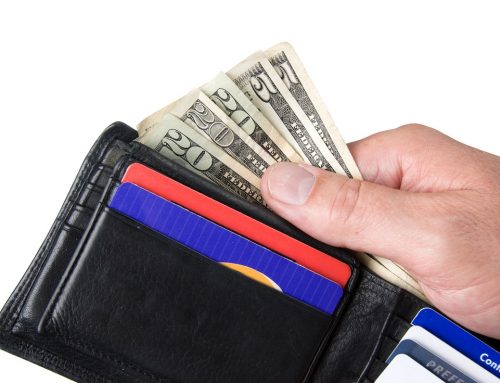Did you know that Americans pay more than $1,300 on average on their energy bills every year? It may be less when compared against the 2012 national average (around $3,000 per person annually), but it is still quite high, especially considering that 2 in every 5 households have seen their wealth almost evaporate (from $5,600 down to $2,00) in the last 25 years. It is definitely about time to close the door to high electric bills and increase home efficiency for year-round savings. Here are some tips to help conquer that goal in 2018 and beyond.
Get an Energy Audit
You may either conduct your own energy audit (visit Energy Star for a free assessment) or ask around if there is any home energy audit program in your area that you could benefit from. You may also try to contact your municipal electric utility for a free assessment (see the Oklahoma Municipal Power authority initiative). The point of the audit is to help you identify areas where you could reduce your energy use.
Install Dimmer Switches
Light dimmers allow lights to operate with lower power output while reducing the flow of electricity to the bulb. Depending on the dimmable light source you have at home, you may achieve different savings. The most efficient light source is LED bulbs, which, when dimmed, can maximize your energy savings. No matter what type of bulb you are using, always make sure to use dimmers that are specially designed to work with those bulbs to avoid fire hazards and other issues. Now, if you don’t want to install a manual dimmer switch, there are apps like those from light bulb manufacturers iLumi and Insteon that offer Bluetooth-enabled smart bulbs.
Don’t Keep Your Fridge Almost Empty
Besides keeping your fridge closed to prevent energy from escaping, it is equally important to keep it full. This is because when you open the door of the fridge, warm air comes in and cold air escapes. So, when the door is shut again, the fridge needs to cool things down again. The more foods inside the fridge, the less cold air to be exchanged with the warm air from your kitchen, which means that the refrigerator does not have to work as hard to cool foods again. Hence, you save energy. The same applies to your freezer.
Air Dry Your Laundry
Using a clothes dryer can account for 6% of your home’s energy usage. This translates into more than $100 annually out of your pocket. So, if you have a backyard, why not set up a clothesline and air dry your laundry? Alternatively, you could hand the clothes on a shower rod or a drying rack. And, if you want to enjoy fluffy clothes, you only need to run them through the dryer for a few minutes while they are still slightly damp. No stiffness and no energy loss! Also, tossing organic, wool dryer balls into the dryer will speed drying time and, of course, save you money.
No More Stand-By Mode
A tremendous amount of energy is consumed when home electronics are turned off, but not unplugged. The power of this stand-by mode is about 10% of the yearly energy use of the typical American household! You may replace the regular surge protectors with smart strips which automatically turn off power to plugs that are idle.
Cut Down On AC Costs
Place blinds and curtains on the sunny side(s) of the home and make sure you keep them closed. To boost your savings, you may install reflective window tints Also, minimize the use of asphalt, cement, and rock on the west and south sides of the home if that is an option for you. If it is not, why not plant some fast-growing shade trees along these sides? And, don’t forget to change the filters of your HVAC system once a month while also having it inspected and cleaned annually.
Go LED
LED light bulbs use, at least, 77% less energy than incandescent bulbs. Either wait for your bulbs to burn out and replace them with LED ones or switch out the bulbs you use the most in the home.
Air Dry Dishes
Your dishwasher needs a lot of energy to dry the dishes. Instead of letting it use a fan or electric heat to do so, you could simply open the door at the end of the washing cycle and let the dishes air dry. Some modern appliances use moisture absorbing minerals, which they release during the dry cycle, and reduce power consumption by 15%-20%. Another rule of thumb is to keep large appliances away from each other (especially if one of them is the fridge – the heat from the other appliances will make the fridge work harder to keep foods cold. Lastly, try to use the dishwasher’s timer (if it has one) to delay the start of the dishwasher for off-peak hours.
Lower the Temps on Your Hot Water Heater
It is estimated that around 18% of a home’s electricity is used to heat water. In fact, it has been found that water heating is the 4th largest energy expense in an American household. Reduce that percentage by lowering your hot water heater by a few degrees (anywhere between 120 degrees, which is the temperature recommended by the Department of Energy, and 140oF). For more savings, it is a good idea to insulate the piping that comes off of your water heater (at least, 5-6 feet of it). Programs like this energy cost calculator can give you a rough idea of the performance of your water heater. To help reduce your hot water energy costs by another 5%-12%, try installing a water heater timer that will allow you to heat water when you need it, instead of throughout the day (which is the case with traditional hot water heaters). Last, but not least, if you need to replace your hot water heater, consider an energy-saving on-demand (or tankless) hot water heater. It will help reduce your hot water energy cost by 50%.
Prefer Cold Water Cycles
The majority of the energy your washing machine consumes goes to heating water (between 80%-90%). Therefore, either wash your laundry in cold water (always full loads) or upgrade to a more energy efficient washing machine. Modern front loading ones use more than 60% less water.
Insulate Your Home
From behind your electrical outlets to your hot water heater, your home should be insulated to prevent heat from escaping and cold from barging into the home, causing your HVAC to work overtime to heat the home. So, purchase an insulating jacket and some insulating paint to paint your home with it (both inside and out). Alternatively, you may purchase a ceramic additive that will instantly turn the paint of your home into insulated paint. To determine if your home has enough insulation for the area you live in, you may use the US Department of Energy online tool.
Install Storm Doors
Storm doors are considered an energy-saving option and a good investment if your existing door is in good condition, but old. A storm door is a second door (placed outside your main door) with retractable or interchangeable glass and screen panels whose main role is to create a pocket of insulation to keep cold air out and warm air in. Generally, it allows for ventilation and more light to enter the home when the weather is warm and protects against bad weather. Storm doors are typically made with an interior layer of insulation, and a front and back layer that make up the exterior skin.
Install Weatherstripping
Wait for a windy day and inspect your home for places that don’t provide sufficient protection against the elements. Simply stand next to the doors and windows and see if you feel a draft inside the home. If you spot such areas, seal the spaces with rubber weather stripping materials or foam with a layer of adhesive on the back and save 5%-10% on your energy bills.
Final Tips for Extra Savings:
- Don’t wait for the food you cook to be 100% done before you turn off the oven or stove. Turn it off early and let the build up heat do the rest of the work.
- Install motion sensors all around the home to make sure the lights will come on only when they need to.
- Don’t keep the 2nd fridge in the garage as it can be too cold in the winter and too hot in the summertime. This will cause it to work harder to maintain optimal temperature. Instead, prefer the basement.
- Avoid placing hot foods in the fridge.
Being energy efficient can make a huge difference to your energy bill costs. The good news is that you won’t always need to make an enormous investment in terms of money or time to eventually save more and waste less energy. Following simple tips like the ones mentioned here will not only leave your pockets fuller but also give your home higher resale value.





